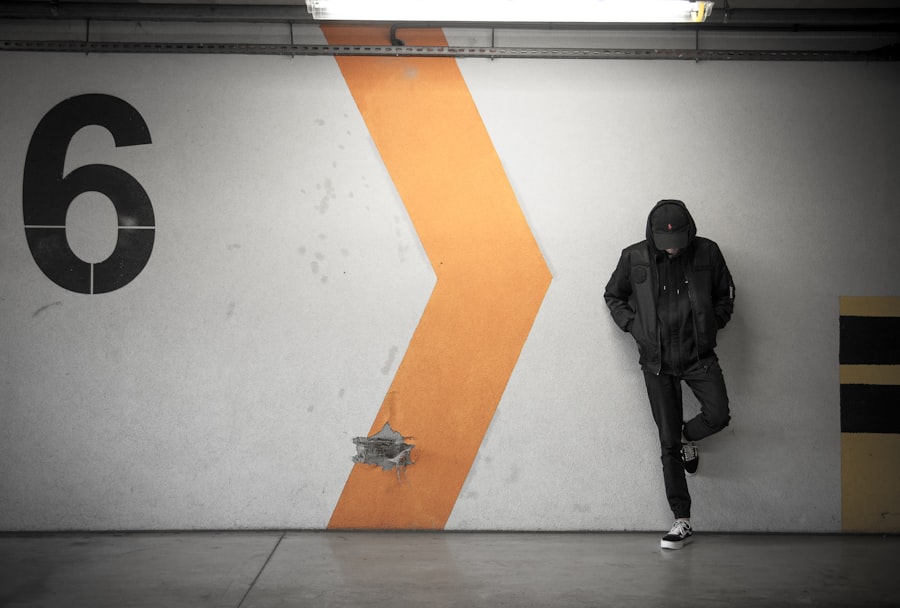Download links
How to install Mastering the Art of Parkour: Unleashing Your Inner Athlete APK?
1. Tap the downloaded Mastering the Art of Parkour: Unleashing Your Inner Athlete APK file.
2. Touch install.
3. Follow the steps on the screen.
Description
Parkour, often described as the art of movement, is a discipline that emphasizes fluidity, efficiency, and creativity in navigating obstacles.
At its core, parkour involves running, jumping, climbing, and vaulting over various structures and terrains, transforming urban landscapes into playgrounds.
Practitioners, known as traceurs (male) or traceuses (female), utilize their bodies to traverse environments in ways that challenge conventional movement patterns. The philosophy behind parkour extends beyond mere physicality; it embodies a mindset of resilience and adaptability. Traceurs often view obstacles not as barriers but as opportunities for growth and self-expression.
This perspective encourages individuals to push their limits, both physically and mentally. The practice fosters a sense of community, as practitioners often train together, sharing techniques and supporting one another in their journeys. Understanding the foundational principles of parkour is essential for anyone looking to embark on this exhilarating path, as it lays the groundwork for developing skills and overcoming challenges.
Key Takeaways
- Parkour is a physical discipline that involves moving through urban environments using only the human body and the surroundings to propel oneself.
- Strength and agility are essential for parkour, and practitioners can develop these through bodyweight exercises, plyometrics, and functional training.
- Overcoming mental barriers in parkour involves building confidence, staying focused, and learning to trust your instincts and abilities.
- Mastering parkour techniques and movements requires practice, patience, and a deep understanding of body mechanics and spatial awareness.
- Safety is paramount in parkour, and practitioners should always warm up, use proper equipment, and be mindful of their surroundings to avoid injury.
Developing Strength and Agility for Parkour
To excel in parkour, one must cultivate a robust foundation of strength and agility. These physical attributes are crucial for executing various movements with precision and control. Strength training should focus on functional exercises that mimic the demands of parkour.
Bodyweight exercises such as push-ups, pull-ups, squats, and lunges are particularly effective, as they engage multiple muscle groups simultaneously. Incorporating plyometric exercises like box jumps and burpees can enhance explosive power, enabling practitioners to leap over obstacles with greater ease. Agility is equally important in parkour, as it allows for quick directional changes and fluid transitions between movements.
Additionally, practicing dynamic movements like vaults and rolls helps develop the necessary body awareness and control required for navigating complex environments. A well-rounded training regimen that combines strength and agility will not only enhance performance but also reduce the risk of injury by preparing the body for the varied demands of parkour.
Overcoming Mental Barriers in Parkour

While physical prowess is vital in parkour, mental fortitude plays an equally significant role in a practitioner’s success. Many individuals encounter mental barriers that can hinder their progress, such as fear of falling or self-doubt regarding their abilities. Overcoming these psychological obstacles requires a combination of self-awareness, gradual exposure to challenges, and positive reinforcement.
One effective strategy is visualization; by mentally rehearsing movements before attempting them, practitioners can build confidence and reduce anxiety. Another approach to overcoming mental barriers is to set incremental goals. Instead of attempting a complex maneuver right away, breaking it down into smaller, manageable steps allows for gradual progression.
Celebrating small victories along the way reinforces a sense of achievement and encourages continued effort. Additionally, training with a supportive community can provide motivation and encouragement, helping individuals push through their fears together. By addressing mental barriers head-on, practitioners can unlock their full potential and experience the true joy of parkour.
Mastering Parkour Techniques and Movements
| Technique | Difficulty Level | Key Movements |
|---|---|---|
| Wall Run | Intermediate | Approach, jump, push off wall |
| Precision Jump | Beginner | Jump, land precisely on small target |
| Cat Leap | Intermediate | Jump, grab, pull up onto ledge |
| Underbar | Advanced | Approach, dive, pass under obstacle |
Mastery of parkour techniques requires dedication and consistent practice. The fundamental movements in parkour include running, jumping, climbing, vaulting, and rolling. Each technique serves a specific purpose and can be adapted to various environments.
For instance, the precision jump is essential for landing accurately on narrow surfaces, while the Kong vault allows practitioners to clear obstacles efficiently. Understanding the mechanics behind each movement is crucial for executing them safely and effectively. To master these techniques, practitioners should focus on form and technique before attempting more complex variations.
For example, when learning to roll after a jump or fall, it’s important to practice the roll on flat ground first to develop muscle memory. Once comfortable with the basic roll, practitioners can gradually incorporate it into higher jumps or more dynamic movements. Regularly filming practice sessions can also provide valuable feedback; reviewing footage allows individuals to identify areas for improvement and track their progress over time.
Safety Tips for Parkour Practitioners
Safety is paramount in parkour, as the discipline inherently involves risk due to its dynamic nature. Practitioners should prioritize safety by training in appropriate environments and using proper techniques. One fundamental safety tip is to always assess the landing area before attempting any jump or drop.
Ensuring that the surface is clear of obstacles and provides adequate cushioning can significantly reduce the risk of injury. Additionally, wearing appropriate footwear with good grip can enhance stability during movements. Another critical aspect of safety is understanding one’s limits.
Beginners should start with basic movements and gradually progress to more advanced techniques as their skills develop. It’s essential to listen to one’s body; if fatigue sets in or discomfort arises, taking a break is crucial to prevent injuries. Practicing with experienced trainers or joining a parkour class can also provide valuable guidance on safe techniques and progression strategies.
By prioritizing safety measures, practitioners can enjoy the thrill of parkour while minimizing risks.
Taking Your Parkour Skills to the Next Level

Exploring Advanced Techniques and Creativity
Once foundational skills are established, many practitioners seek to elevate their parkour abilities further. This progression often involves exploring advanced techniques and incorporating creativity into movement patterns. One way to take skills to the next level is by participating in workshops or training camps led by experienced traceurs.
Learning from Others and Setting Personal Challenges
These events provide opportunities to learn new techniques, receive personalized feedback, and connect with other passionate practitioners. In addition to formal training opportunities, setting personal challenges can foster growth in parkour skills. For instance, creating obstacle courses that mimic real-world environments encourages practitioners to think critically about their movement strategies while pushing their limits.
Enhancing Body Awareness and Fluidity
Engaging in cross-training activities such as martial arts or dance can also enhance body awareness and fluidity in movement. Ultimately, taking parkour skills to new heights requires a commitment to continuous learning and exploration within the discipline. By embracing the multifaceted nature of parkour—its physical demands, mental challenges, and creative possibilities—practitioners can embark on a fulfilling journey that transcends mere athleticism.
The Art of Movement and Its Benefits
The art of movement invites individuals to redefine their relationship with their environment while fostering resilience and community spirit along the way.
FAQs
What is parkour?
Parkour is a physical discipline that involves moving through an environment in a fluid and efficient manner, using only the human body and the surroundings to propel oneself.
What are the basic movements in parkour?
Basic movements in parkour include running, jumping, climbing, vaulting, and balancing. These movements are used to navigate obstacles and terrain in an urban or natural environment.
Is parkour dangerous?
Parkour can be dangerous if not practiced with proper training and caution. It involves high-risk movements and requires a strong understanding of one’s physical abilities and limitations.
What are the benefits of practicing parkour?
Practicing parkour can improve strength, agility, coordination, and overall fitness. It also promotes mental discipline, problem-solving skills, and creativity in movement.
Is parkour suitable for all ages?
Parkour can be practiced by people of all ages, but it is important to start with proper training and progress at a pace that is suitable for one’s physical abilities.
Are there any specific safety measures to consider when practicing parkour?
It is important to warm up and stretch before practicing parkour, as well as to wear appropriate footwear and protective gear. Additionally, practicing in a safe environment and under the guidance of a qualified instructor is recommended.





